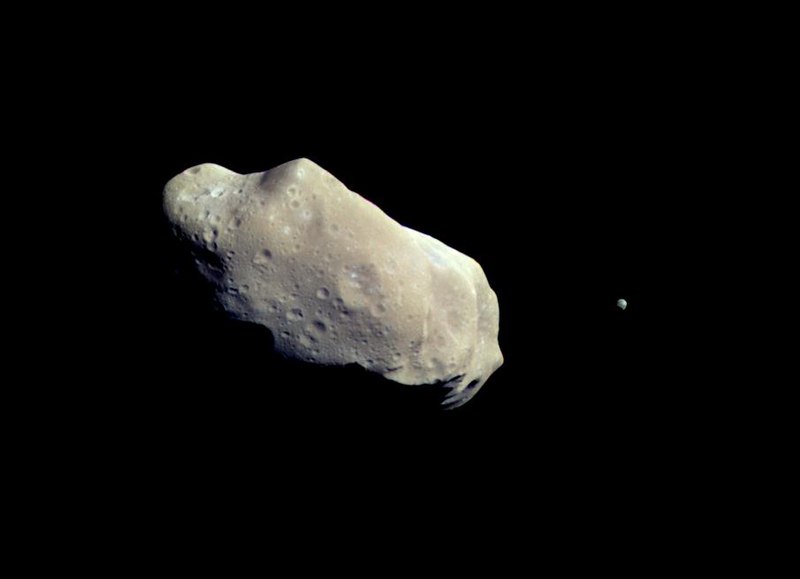File:243 ida.jpg

本预览的尺寸:800 × 579像素。 其他分辨率:320 × 232像素 | 640 × 463像素 | 905 × 655像素。
原始文件 (905 × 655像素,文件大小:20 KB,MIME类型:image/jpeg)
文件历史
点击某个日期/时间查看对应时刻的文件。
| 日期/时间 | 缩略图 | 大小 | 用户 | 备注 | |
|---|---|---|---|---|---|
| 当前 | 2022年9月10日 (六) 14:59 |  | 905 × 655(20 KB) | BevinKacon | Reverted to version as of 10:44, 30 January 2006 (UTC) the NASA page clearly states original resolution as Product Size: 905 x 655 pixels (w x h) |
| 2020年7月23日 (四) 09:42 |  | 679 × 491(12 KB) | Leonel Sohns | Recovered old version from archive.org | |
| 2019年4月24日 (三) 18:55 |  | 718 × 520(65 KB) | FriedrichKieferer | Better quality. | |
| 2013年8月11日 (日) 11:46 |  | 718 × 520(17 KB) | Soerfm | Crop | |
| 2006年1月30日 (一) 10:44 |  | 905 × 655(20 KB) | Arnomane | better resolution | |
| 2005年2月1日 (二) 19:52 |  | 679 × 491(12 KB) | Svdmolen | NASA image of 243 Ida and Dactyl. - NASA {{PD}} |
文件用途
以下页面使用本文件:
全域文件用途
以下其他wiki使用此文件:
- af.wikipedia.org上的用途
- af.wiktionary.org上的用途
- als.wikipedia.org上的用途
- am.wikipedia.org上的用途
- an.wikipedia.org上的用途
- ar.wikipedia.org上的用途
- ast.wikipedia.org上的用途
- az.wikipedia.org上的用途
- bat-smg.wikipedia.org上的用途
- bcl.wikipedia.org上的用途
- be-tarask.wikipedia.org上的用途
- beta.wikiversity.org上的用途
- be.wikipedia.org上的用途
- bg.wikipedia.org上的用途
- bjn.wikipedia.org上的用途
- bn.wikipedia.org上的用途
- bo.wikipedia.org上的用途
- br.wikipedia.org上的用途
- bs.wikipedia.org上的用途
- ca.wikipedia.org上的用途
- ckb.wikipedia.org上的用途
- cs.wikipedia.org上的用途
查看本文件的更多全域用途。



